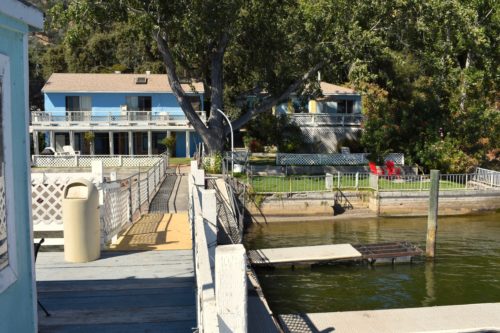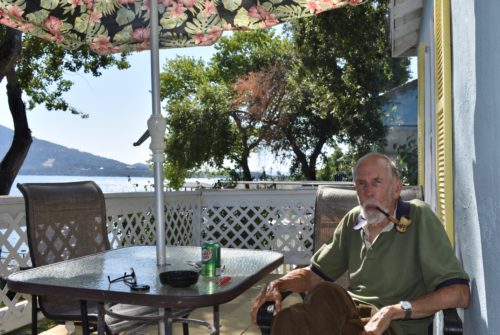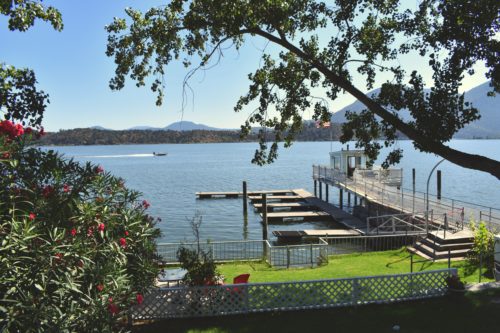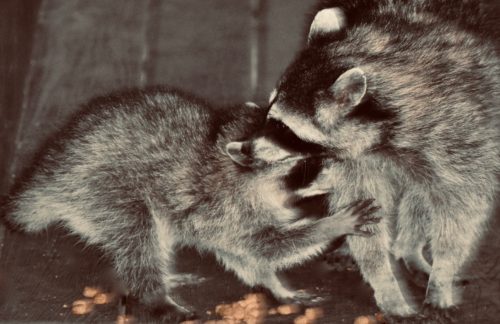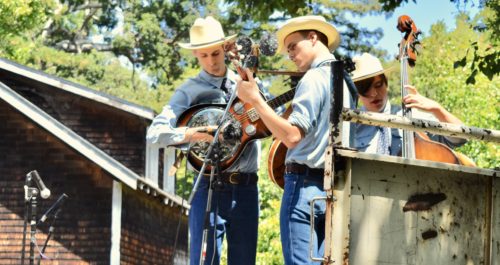Sun 25 Aug 2019
Even raccoons suffer from Trump’s cruelty
Posted by DavidMitchell under Uncategorized
1 Comment
Caveat lectorem: When readers submit comments, they are asked if they want to receive an email alert with a link to new postings on this blog. A number of people have said they do. Thank you. The link is created the moment a posting goes online. Readers who find their way here through that link can see an updated version by simply clicking on the headline above the posting.

A mother raccoon and two kits on the deck at Mitchell cabin.
As regular readers of this blog know, I am fascinated by the raccoons that show up nightly on our deck, so as might be expected, I found an article in the Science section of last Thursday’s Washington Post to be particularly disturbing: ‘Caged raccoons drooled in 100-degree heat but federal enforcement has faded.’
The Post reported that “for two days running in the summer of 2017, the temperature inside a metal barn in Iowa hovered above 96 degrees. Nearly 300 raccoons, bred and sold as pets and for research, simmered in stacked cages. Several lay with legs splayed, panting and drooling,” a US Department of Agriculture inspector wrote.
“On the third day, the thermometer hit 100, and 26 raccoons were in severe heat distress and suffering,” the inspector reported. Then a USDA team of veterinarians and specialists took a rare step: they confiscated 10 of the animals and made plans to come back for the others.

The Ruby Fur Farm in Iowa. A USDA inspector during one check found the heat in the farm’s raccoon cages had reached 117.2 degrees. (Photo obtained by The Washington Post.)
But after an appeal from an industry group to a Trump White House advisor, Agriculture Secretary Sonny Perdue and senior USDA officials intervened, according to five former USDA employees. The inspectors and veterinarians were blocked from taking the remaining raccoons and ordered to return those they had seized.
One inspector, who had worked 20 years for the Department of Agriculture, quit later that year, explaining to The Post: “It feels like your hands are tied behind your back. You can’t do many of the things you’re supposed to do when it comes to protecting animals.”

A mother raccoon sleeps comfortably in Point Reyes Station.
The Post article goes on to describe the Trump administration’s also easing bans against cruelty to horses. This particularly affects Tennessee Walking Horses, which compete in horse shows with high-stepping gaits. Some owners unfortunately short-cut their training of the horses by driving spikes into animals’ front hooves, burning away the center of the hooves’ bottoms with caustic chemicals, or tying chains tightly around their ankles. This ‘soring’ makes it so painful for a horse to put much weight down on its hooves that it becomes used to quickly drawing them back up.
Here again, I have a personal interest in the topic. In 1970 while teaching at Upper Iowa University, I became a Fayette County delegate to the Iowa State Democratic convention where I advocated a ban on the soring of horses. Later that year, the ban became part of a new federal law that made soring a violation of USDA regulations. Sored horses could no longer be entered in competition.
Under Trump, however, the USDA has more compassion for horse owners than mistreated horses. The USDA now says that sored horses should no longer be disqualified from horse shows unless it can be demonstrated that they belonged to their current owners at the time they were sored.
I’m sure the owners of fur farms and Tennessee Walking Horses will be voting for Trump next year.


